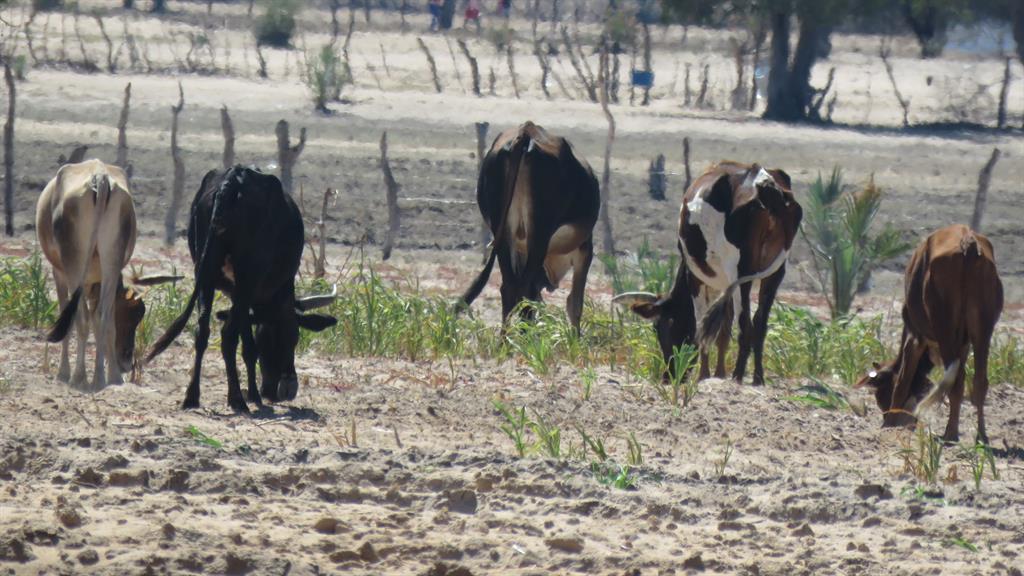Desperate cattle flood Ohangwena
The Ohangwena Regional Council is concerned about environmental damage as large numbers of livestock enter the region from as far as Kaokoland and other areas seeking better pastures.
Council chairperson Erickson Ndawanifa says many farmers are driving their livestock into Ohangwena in the hope of surviving the drought.
“Every day we are getting a large number of cattle flocking in from other areas, as far as Okangwati in the Kunene Region, Oshana, Omusati and Oshikoto. The side of Okongo has become the recipient of all these livestock. We are now experiencing challenges of managing grazing and infrastructure,” Ndawanifa says.
“Boreholes are getting damaged due to the added pressure and we also expect a high risk of environmental degradation and erosion because of exceeding the carrying capacity.”
Ndawanifa says some people have driven their livestock into Angola and the Kavango regions, but there are still too many cattle in Ohangwena.
The cattle are now competing for the available water and sometimes go days without drinking.
“We have requested the government to assist us with drought-relief money to drill additional boreholes so that we can assist farmers to get through the drought. It is not that there is enough grass in the region, but only bushes and shrubs which farmers feel will help their livestock.
“There are some boreholes that were drilled but are not used because of salty water. I think these boreholes can still be used for animals during this drought,” Ndawanifa says.
The government has allocated N$572.7 million to drought relief in communal areas. The money is earmarked for food assistance, water tanks, livestock management incentives, livestock transport subsidies to and from grazing areas, transport of fodder, lease of grazing areas, subsidies for crop farmers, lick supplements and fodder subsidies.
This will be done on the condition that farmers bring down their herds to 25 cows and one bull per farmer.
Ndawanifa says the region has mandated the Directorate of Veterinary Services (DVS) to register livestock owners for the drought assistance programme.
The problem is that cattle flocking in from other regions are making the identification process difficult.
The Omusati Regional Council chairperson, Modestus Amutse, says the regional government is urging farmers to sell their livestock.
“We have an operational abattoir in the region. We are therefore advising farmers to reduce their livestock by selling some of them to the abattoir. We have already engaged with the abattoir management to fast-track the process for farmers who want to sell,” Amutse says.
“The issue at hand is just the market that we are currently busy sorting out to ensure that the abattoir is empowered to assist farmers.”
Amutse calls on farmers not to panic, but to do all they can to survive the drought.
Council chairperson Erickson Ndawanifa says many farmers are driving their livestock into Ohangwena in the hope of surviving the drought.
“Every day we are getting a large number of cattle flocking in from other areas, as far as Okangwati in the Kunene Region, Oshana, Omusati and Oshikoto. The side of Okongo has become the recipient of all these livestock. We are now experiencing challenges of managing grazing and infrastructure,” Ndawanifa says.
“Boreholes are getting damaged due to the added pressure and we also expect a high risk of environmental degradation and erosion because of exceeding the carrying capacity.”
Ndawanifa says some people have driven their livestock into Angola and the Kavango regions, but there are still too many cattle in Ohangwena.
The cattle are now competing for the available water and sometimes go days without drinking.
“We have requested the government to assist us with drought-relief money to drill additional boreholes so that we can assist farmers to get through the drought. It is not that there is enough grass in the region, but only bushes and shrubs which farmers feel will help their livestock.
“There are some boreholes that were drilled but are not used because of salty water. I think these boreholes can still be used for animals during this drought,” Ndawanifa says.
The government has allocated N$572.7 million to drought relief in communal areas. The money is earmarked for food assistance, water tanks, livestock management incentives, livestock transport subsidies to and from grazing areas, transport of fodder, lease of grazing areas, subsidies for crop farmers, lick supplements and fodder subsidies.
This will be done on the condition that farmers bring down their herds to 25 cows and one bull per farmer.
Ndawanifa says the region has mandated the Directorate of Veterinary Services (DVS) to register livestock owners for the drought assistance programme.
The problem is that cattle flocking in from other regions are making the identification process difficult.
The Omusati Regional Council chairperson, Modestus Amutse, says the regional government is urging farmers to sell their livestock.
“We have an operational abattoir in the region. We are therefore advising farmers to reduce their livestock by selling some of them to the abattoir. We have already engaged with the abattoir management to fast-track the process for farmers who want to sell,” Amutse says.
“The issue at hand is just the market that we are currently busy sorting out to ensure that the abattoir is empowered to assist farmers.”
Amutse calls on farmers not to panic, but to do all they can to survive the drought.





Comments
Namibian Sun
No comments have been left on this article